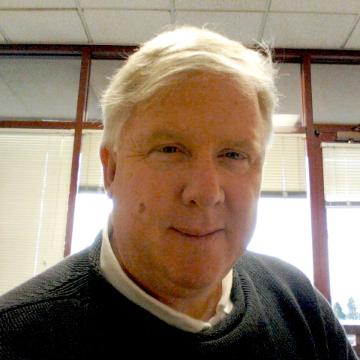
How Is SCU Joining the "Maker Movement" ?
It’s spring on campus, and students are on the make! But wait, it’s not what you think. I’m talking about students making things in the University’s Maker Lab.
the Maker Lab is the only place where any student can be quickly trained to use the tools and a team of students from multiple departments can easily work together
The Maker Lab is a hands-on prototyping space that lets students build, invent, and test their creations for courses, senior projects, artistic displays, or even their own personal ventures. In addition to hand and power tools, the lab includes a variety of machines that are part of a new wave of “personal making:” 3D printers, laser cutters, and circuit board fabricators. While the University has many wonderful, dedicated labs in various departments, the Maker Lab is the only place where any student can be quickly trained to use the tools and a team of students from multiple departments can easily work together. Recent examples run the gamut from keychains to a prosthetic arm!
Whether you’re an engineer, a craftsman, or simply a weekend Do-It-Yourselfer, you’ve probably heard about the Maker Movement. It is an emerging phenomenon combining traditional craftsmanship with newly accessible and low-cost technologies— like 3D printing and simple embedded processors — to inexpensively create smart, physical things. Much of this culture involves the excitement of inventing and the development of one’s entrepreneurial spirit.
This movement extends beyond campus. The combination of advanced fabrication technologies with low-cost, simple-to-use tools has led to the creation of labs like this throughout the educational community, and many neighborhoods are creating local “maker spaces” and “fab labs.” The Maker Faire here in Silicon Valley is a multi-day festival drawing more than 100,000 people. Exhibits span from artistic contraptions to robotic inventions, and vendors range from hobbyists peddling craft supplies to Fortune 500 companies.
many experts point to the availability of these low-cost, advanced “tools of making” as a means of stimulating the economy and boosting U.S. manufacturing
At a national level, many experts point to the availability of these low-cost, advanced “tools of making” as a means of stimulating the economy and boosting U.S. manufacturing. This was affirmed last summer when President Obama declared a National Day of Making to celebrate the Maker Movement. During the event Obama announced a variety of new Maker-related federal investments ranging from STEM education initiatives to workforce training programs to major new R&D programs. Websites like Kickstarter are helping fuel interest in Maker products, and even companies like Intel and Autodesk offer tools to enable entrepreneurial Makers to create new, innovative products. More broadly, emerging markets like the Internet of Things and aerial drones are already being stimulated by contributions from Makers.

Photo credit: Able Hsu
Here on campus, more than 600 students, faculty, and staff from engineering to studio art use the School of Engineering’s Maker Lab. In courses and projects during this past year, students used the Lab to build small robots, water purity testers, and even small devices to process DNA. This success is leading to an expansion of the lab, which will double the space and increase the range of tools and machines that are available. We’re also exploring ways to turn the lab into a community resource in order to host a wide range of new activities such as K-12 outreach, hobbyist and workforce training classes, and industrial collaborations.
So, the next time you’re on campus, stop by. Pretty soon, you’ll feel the itch, and then you’ll want to be on the make, too!
May 20, 2015

